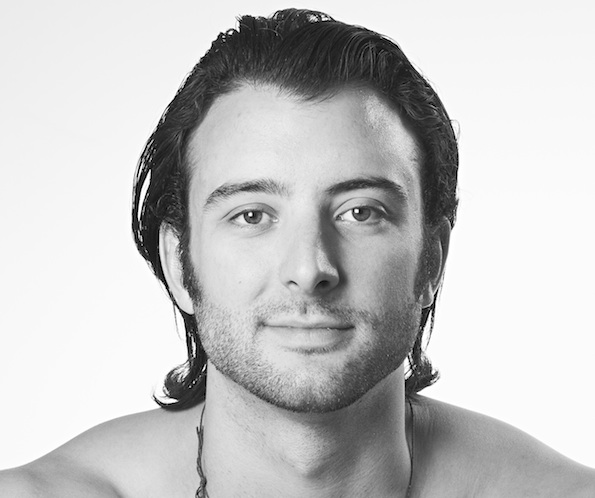By Rain Francis of Dance Informa.
Dance Informa recently chatted with Matthew Lehmann, a principal dancer with West Australian Ballet. Born in Melbourne, Lehmann graduated from The Australian Ballet School in 2004, joined Alberta Ballet in Canada in 2005, and later joined West Australian Ballet in 2010.
Here, he shares how he started dancing, what led him to West Australian Ballet, what his typical daily schedule looks like and what role he hopes to perform one day.
What is your first memory of dance?
“One of my first memories of dance is watching my parents practicing ballroom sequences in the kitchen at home. They both competed professionally here in Australia and overseas. So I guess having dance around me from a young age made it just a part of normal life.”
How did you get your current job in the West Australian Ballet?
“I was dancing in Canada before I joined WAB. I danced at Alberta Ballet for five years – my first job from leaving the Australian Ballet School – and felt like I needed a change. I wanted a new set of eyes on me; I wanted to be pushed. So I left Canada and came back home to Australia. I auditioned for WAB, which was then under Ivan Cavallari. He offered me a guest artist contract for the season, and after that I became a full company member.”
 What have been some of your highlights while with WAB?
What have been some of your highlights while with WAB?
“There have been so many highlights; it’s so hard just to name a couple! Performing at the Quarry is definitely one. The atmosphere of an outdoor theater is incredible. Performing Radio and Juliet there this year was especially amazing. Another highlight would have to be performing Onegin alongside Fiona Evans. There is a reason why this ballet is so popular and much loved around the world. This is the show that I was promoted to Leading Artist in (which is now Principal Dancer), so I will always have a special memory with this ballet.”
Describe a typical day in the company.
“A typical workday is from 10 a.m. to 5:45 p.m. It consists of class for an hour and a half and rehearsals that go from 11:35 till 5:45, including a lunch break. So you’re pretty dead mentally and physically after a full day, especially after a full week.”
What is the most challenging thing about your job?
“I find the most challenging thing is trying to learn and retain choreography quickly, especially at the end of the day. I find I get to a point and my brain can’t retain any more steps. It’s about at the same point when everyone is getting delirious and everything starts to fall apart.”
What is the thing you love the most about it?
“The thing I love the most is performing, especially the acting side of dancing. The thing that I probably like the least is class – well, not all the time – but sometimes it’s hard to do class when the body is hurting. But you have to do class to be able to dance on stage; so it’s a means to an end.”
What do you do in your non-dancing downtime?
“I find that having such a crazy week, my weekends tend to be fairly low key and relaxed. I try to get to the beach when I can. The beaches here in Perth are amazing. I also like going down to the local pub with a few mates to unwind and have a laugh.”
How do you cope with nerves and/or stress?
“When I get bad nerves and get stressed, I find that I’m over-thinking about everything that could go wrong. To help with that, I sit and breathe slowly and clam my body down.”
Which roles are on your wishlist?
“The one role and ballet that I have always wanted to do is Spartacus. It was one of the first ballets that I watched on VHS. It was the first time that I saw ballet being something other than the pretty stereotype. It showed me that ballet could be manly and powerful. Knowing that there were ballets out there like that was one of the things that kept me in ballet.”
Who have been your favourite choreographers to work with?
“Edward Clug was amazing to work with for Radio and Juliet. Everything was so calm and there was zero stress. Kirk Peterson was a favourite. He choreographed Othello on the company in Canada while I was there.”
Who is on your wishlist to work with?
“I don’t really have a wishlist of people or companies that I want to work with. In saying that, Ohad Naharin’s and Crystal Pite’s choreography is amazing and challenging. You have to be challenged to be able to grow.”
Do you think about a life after dance? And if so, how do you prepare?
“Yes, it is inevitable to start thinking about life after dance. There is an amazing company that was started up in Canada, called DTRC (Dancer Transition Resource Center), which helps dancers with this transition. They help with everything from tuition costs to career counseling. It’s amazing; it’s a shame that there aren’t more companies out there like this to help dancers.”
What is your advice to recent dance graduates?
“There is a video of Bryan Cranson giving advice to actors but I feel it does apply to all arts auditions. He says you shouldn’t go into an audition trying to get the job, because that can do the opposite. You go in there not to get the job but to present what you do; there is power and confidence in that. Then walk away, because everything else is out of your control.”
Photos courtesy of WA Ballet.

















